[PConline News] Huawei's Mate 10, the national version, has officially launched today. Following the event, the standard version of the Mate 10 is now available across all platforms. According to reports, it only took four to five days from the start of pre-orders to the official sale, and the number of reservations on the official store already exceeded 850,000. Meanwhile, major e-commerce platforms reported over 410,000 pre-orders. This means that within just a few days, the total number of omnichannel reservations for the Mate 10 surpassed one million.

In contrast, Apple’s new iPhone 8 and iPhone 8 Plus have reportedly struggled with low demand since their release. The long lines at Apple Stores on the first day of sales have disappeared. However, the most anticipated model this year was the iPhone X. Many fans were eagerly waiting for its launch. But based on current omnichannel reservation numbers, the iPhone X received only around 1.2 million pre-orders in the first month, which pales in comparison to the massive interest shown by consumers for the Huawei Mate 10.

The Huawei Mate 10 series and the iPhone X share several similarities, such as the 10nm chip, full-screen design, and rear dual camera setup. Both are top-tier smartphones, but which one do you prefer? Whether it's the powerful performance of the Mate 10 or the sleek design of the iPhone X, there's something for everyone. It will be interesting to see how they perform in the market in the coming months.
As consumer preferences continue to shift, brands like Huawei are gaining more attention, especially in the Chinese market. With strong support from local users and a growing global presence, the Mate 10 has proven to be a solid competitor to Apple's latest offerings.
A single-phase VFD, also known as a variable frequency drive, is a specialized electronic device used for precise control and regulation of single-phase motors. Unlike three-phase motors that are commonly used in industrial applications, single-phase motors are predominantly found in residential and small-scale applications.
The primary function of a single-phase VFD is to control the frequency and voltage supplied to the single-phase motor, thereby enabling accurate regulation of motor speed. By adjusting the frequency and voltage output, the VFD allows for smooth and precise control over the motor's rotational speed. This feature is particularly useful in applications where speed control is required, such as in residential HVAC systems, small-scale machinery, and household appliances.
Energy efficiency is a significant advantage offered by single-phase VFDs. By adjusting the motor speed to match the load requirements, the VFD reduces energy wastage and improves overall energy efficiency. When the motor operates at a lower speed during periods of low demand, energy consumption is significantly reduced, resulting in energy savings and lower operating costs.
Motor protection is another important aspect addressed by single-phase VFDs. They incorporate various protective features, including overload protection, short circuit detection, and thermal protection, which help safeguard the motor against damage due to excessive current, voltage fluctuations, or overheating. This ensures reliable motor operation, prolongs the motor's lifespan, and reduces the risk of unexpected failures.
Harmonic filtering is also a critical consideration in single-phase VFD applications. When single-phase VFDs operate, they can introduce harmonics into the power supply, which may cause issues such as voltage distortions and interference with other electrical equipment. To mitigate these problems, single-phase VFDs often incorporate harmonic filtering techniques to suppress harmonics and ensure a clean and stable power supply, maintaining power quality and preventing damage to connected equipment.
Control algorithms play a significant role in single-phase VFD operation. These algorithms allow for precise control and adjustment of motor speed, ensuring smooth acceleration, deceleration, and accurate speed regulation. Advanced control algorithms enable efficient motor operation and enhance overall system performance.
In summary, single-phase VFDs provide precise control and regulation of single-phase motors in residential and small-scale applications. With their energy efficiency, motor protection features, harmonic filtering capabilities, and advanced control algorithms, single-phase VFDs enhance motor performance, reduce energy consumption, and ensure reliable operation in various residential and small-scale applications.
380V Inverter,Vfd Variable Frequency Drive,380V Variable Frequency Drive,Economic Vfd
WuXi Spread Electrical Co.,LTD , https://www.vfdspread.com